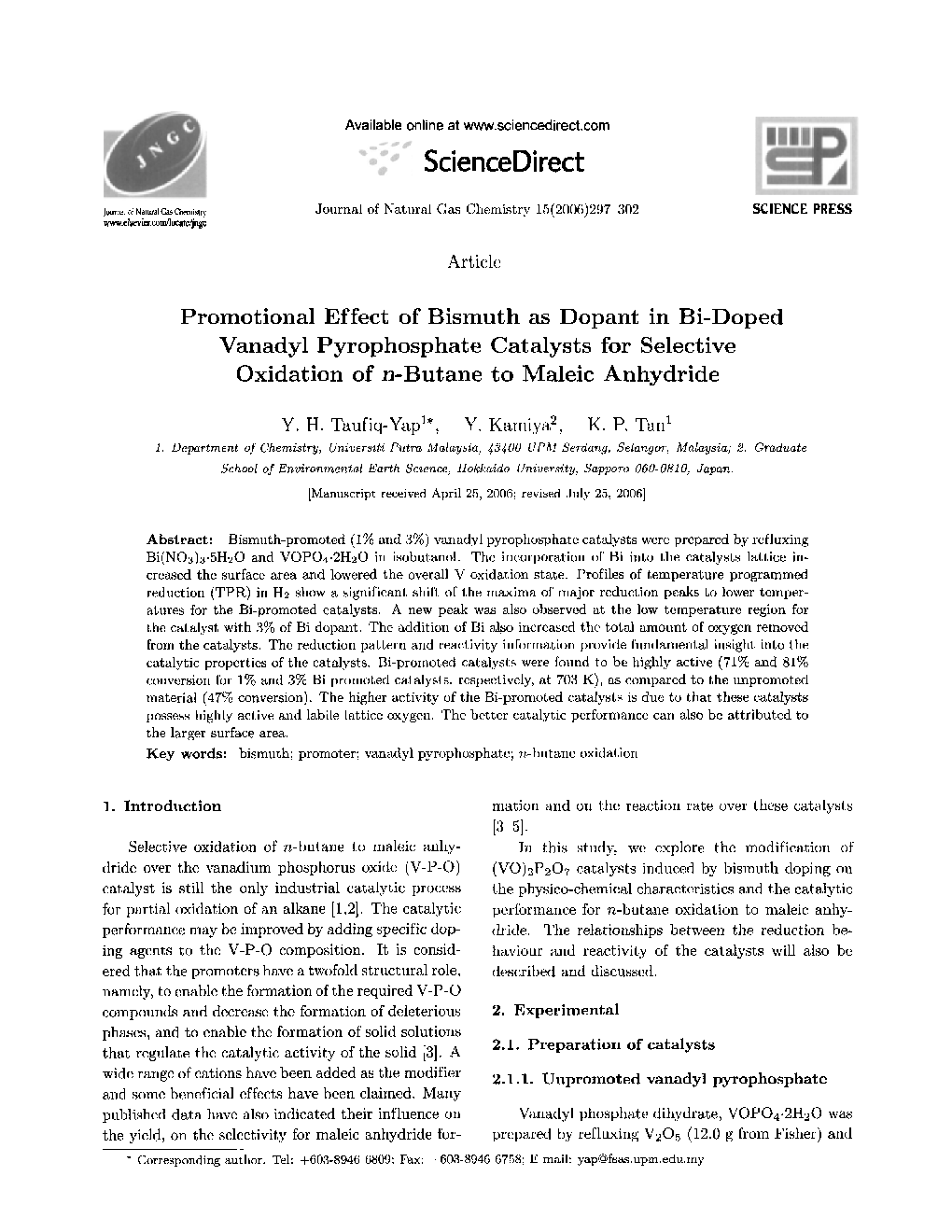| Article ID | Journal | Published Year | Pages | File Type |
|---|---|---|---|---|
| 71868 | Journal of Natural Gas Chemistry | 2006 | 6 Pages |
Bismuth-promoted (1% and 3%) vanadyl pyrophosphate catalysts were prepared by refluxing Bi(NO3)3·5H2O and VOPO4·2H2O in isobutanol. The incorporation of Bi into the catalysts lattice increased the surface area and lowered the overall V oxidation state. Profiles of temperature programmed reduction (TPR) in H2 show a significant shift of the maxima of major reduction peaks to lower temperatures for the Bi-promoted catalysts. A new peak was also observed at the low temperature region for the catalyst with 3% of Bi dopant. The addition of Bi also increased the total amount of oxygen removed from the catalysts. The reduction pattern and reactivity information provide fundamental insight into the catalytic properties of the catalysts. Bi-promoted catalysts were found to be highly active (71% and 81% conversion for 1% and 3% Bi promoted catalysts, respectively, at 703 K), as compared to the unpromoted material (47% conversion). The higher activity of the Bi-promoted catalysts is due to that these catalysts possess highly active and labile lattice oxygen. The better catalytic performance can also be attributed to the larger surface area.
